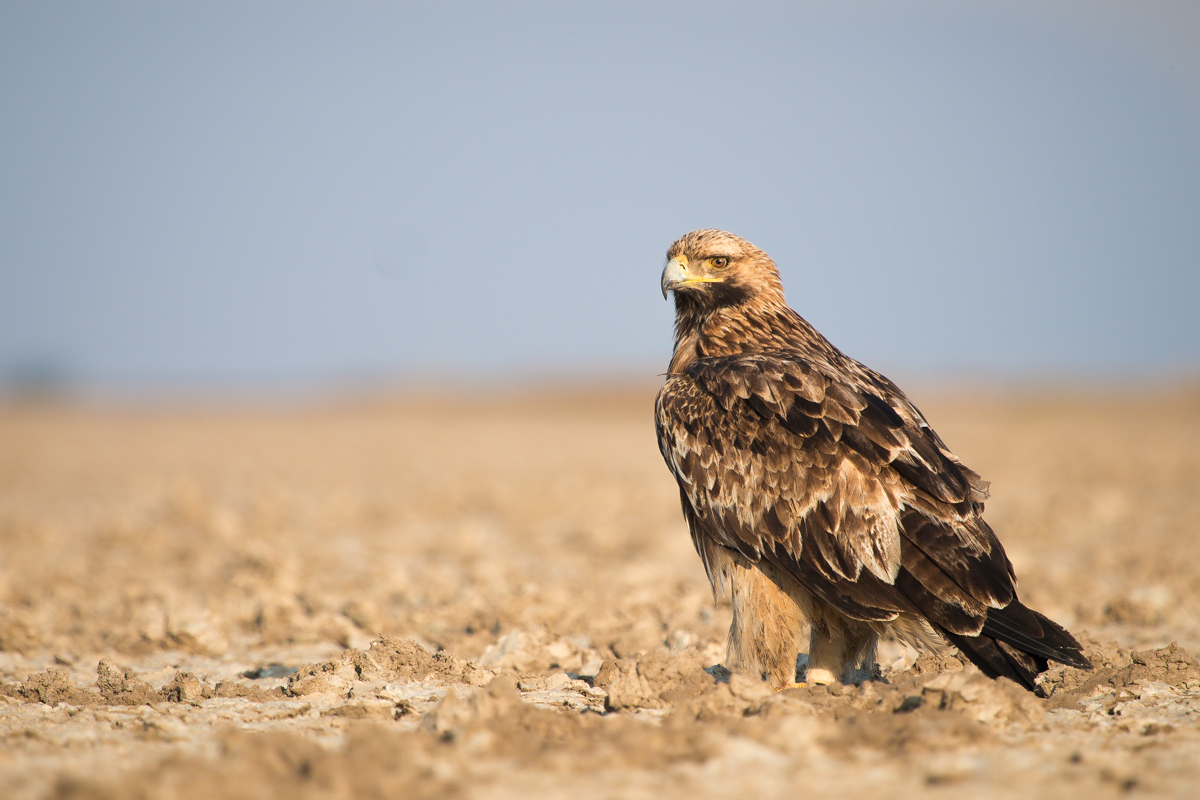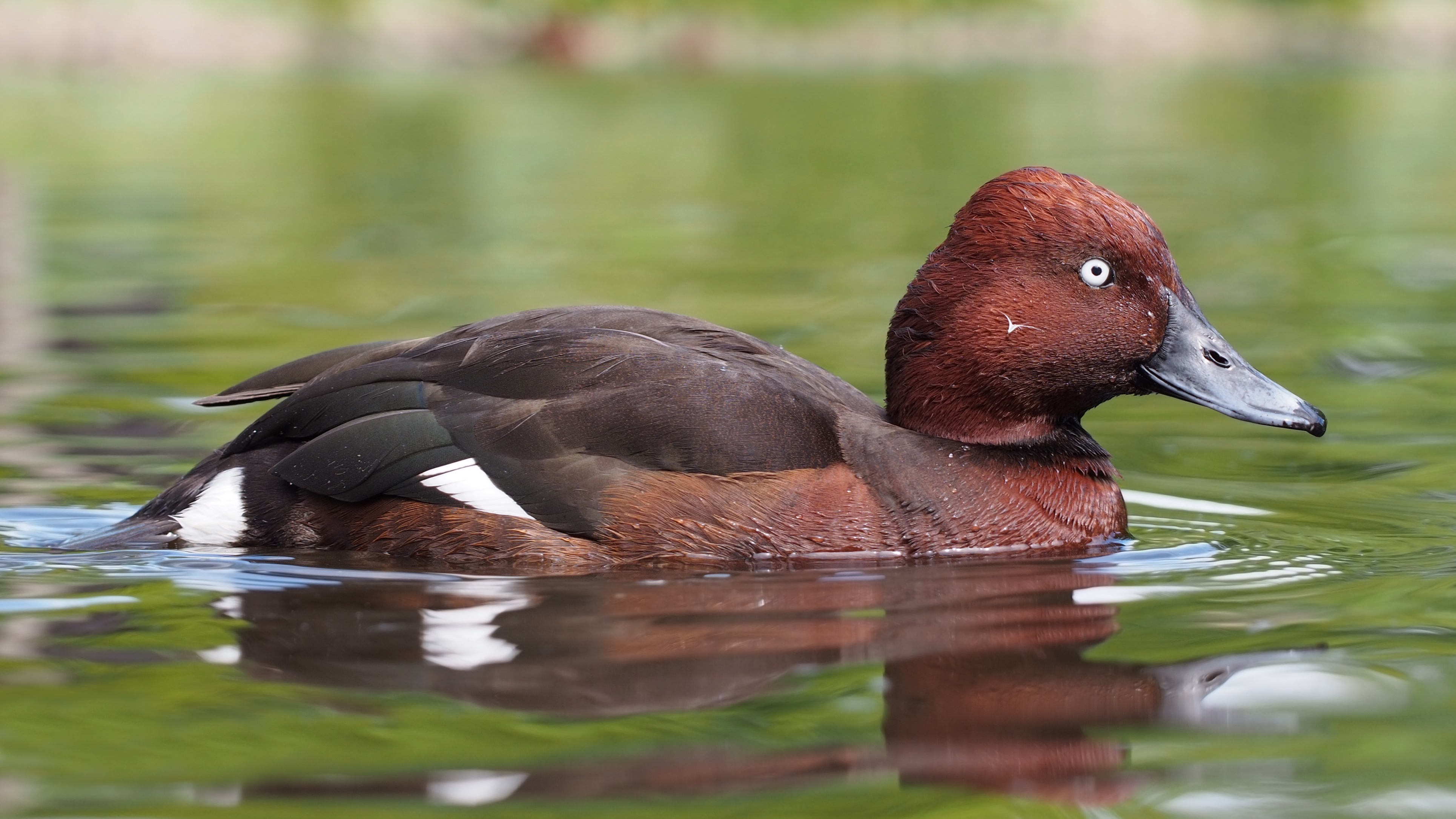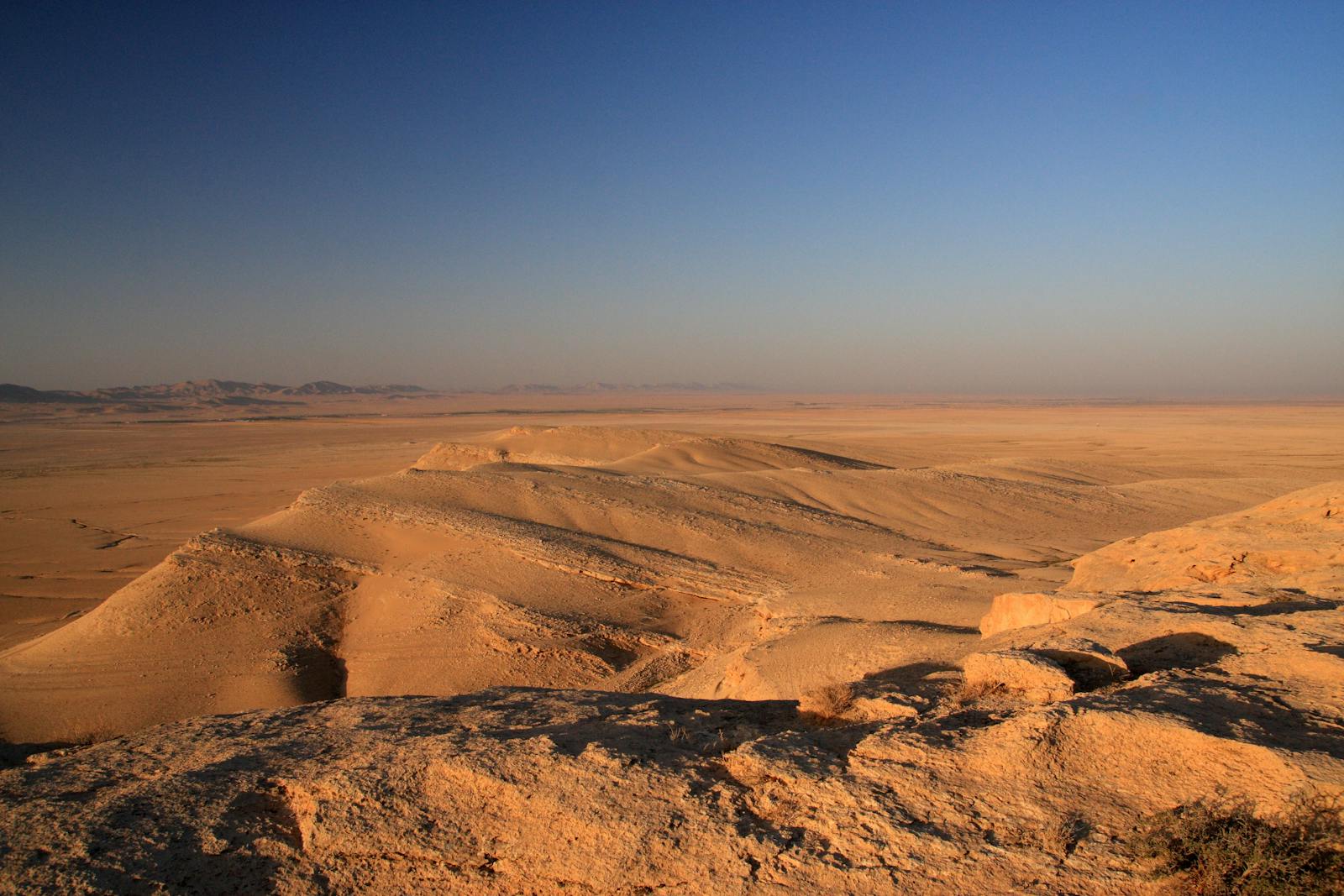Mesopotamian Shrub Desert
The ecoregion’s land area is provided in units of 1,000 hectares. The conservation target is the Global Safety Net (GSN1) area for the given ecoregion. The protection level indicates the percentage of the GSN goal that is currently protected on a scale of 0-10. N/A means data is not available at this time.
Bioregion: Red Sea, Arabian Deserts & Salt Marshes (PA26)
Realm: Southern Eurasia
Ecoregion Size (1000 ha):
20,498
Ecoregion ID:
830
Conservation Target:
19%
Protection Level:
0
States: Jordan, Syria, Iraq
The Mesopotamian Shrub Desert is a transitional ecoregion, bridging the gap between the Syrian steppes in the North and the deserts of Arabia in the South. The desert plains harbor sand cats, jackals, and striped hyenas, and the wetlands in the East, fed by the Tigris and Euphrates rivers, are an important site for migratory water birds.
%20wikipedia.jpg)
The flagship species of the Mesopotamian Shrub Desert ecoregion is the Mesopotamian hooded crow. Image credit: Creative Commons
This ecoregion encompasses most of the Syrian Desert, also known as Badiyat ash Sham, stretching across East Jordan, southern Syria and western Iraq towards the foothills of the Zagros Mountains. A transitional area between the steppes to the North and great deserts in the South, the terrain is mostly rocky or sandy desert plateaus, with a section of black basalt desert in East Jordan and wetlands in northern Iraq. The Tigris and Euphrates rivers run through the eastern half of the region. The climate is seasonal with most of the annual rainfall of around 120 mm concentrating in the winter months. Temperatures can plummet below zero during winter nights, whereas summer day temperatures frequently exceed 40°C.
Vegetation is sparse and dominated by shrubs such as sagebrush, Anabasis, and Haloxylon. Achillea fragrantissima and Astragalus spp. are also common perennial species, as is Stipagrostis grosaplomosa, a widespread and important feed grass in the region. After periods of rainfall, ephemeral species such as stork’s-bill and groundsel appear, lasting only for a short time before setting seed in order to survive the burning heat of the summer. Reeds, bulrushes, and poplar trees are commonly found surrounding the rivers and lakes in the east.

Eastern imperial eagle. Image credit: Sumeet Moghe, Creative Commons
The arid plains are home to a range of mammal species, including the sand cat, jackal, vulpell’s fox, and striped hyena. Small populations of Arabian oryx and sand gazelle are also reported at a few sites. The ecoregion is notable for its diverse bird population, with a dark morph of the mourning wheatear endemic to the basalt plains in the west of the region, and the Mesopotamian hooded crow endemic to the area between the Tigris and Euphrates in the east.
Around the Haditha Wetlands in Iraq, the vulnerable Marbled Duck and near threatened Ferruginous Duck can be found, and the nearby sinkhole at Sheikh Hadid Shrine contains two endemic, critically endangered cave-dwelling fish species: Typhlogarra widdowsoni and Caecocypris basimi. Tharthar lake, and the wide area of grazing land surrounding it, is considered as the main wintering ground for several threatened species such as the Saker falcon and Houbara bustard. A host of reptiles and insects can be spotted here, including the eponymous Aphodaulacus talilensis beetle discovered in the central-Syrian Al Talila Reserve.

Ferruginous duck. Image credit: Francis Franklin, Creative Commons
Human activity in this ecoregion over thousands of years has left a significant mark on the landscape. Nomadic Bedouin tribes graze livestock on vegetation in arid, shrub-dominated areas, whereas the rich soils surrounding the Tigris and Euphrates, overlapping with the ancient ‘fertile crescent’ region, provide ideal conditions for growing crops such as date palms and citrus fruits. Woody vegetation is frequently harvested for firewood. Several protected areas exist across the region, encompassing a broad range of habitats, and several new nature reserves have been proposed for Iraq. Notable sites include Burqu Nature Reserve in Jordan and Al-Talila Reserve, the first protected area created specifically for the purpose of biodiversity conservation in Syria. Several important Bird Areas in Jordan and Iraq reflect the importance of this ecoregion for migratory birds.
Desertification as a result of climate change poses an existential threat to ecosystems across the entire region, exacerbated by overgrazing and extensive woodcutting for firewood. Poor farming practices and inappropriate management of water resources around the Tigris and Euphrates will increase rates of desertification further unless significant and immediate action is taken. Uncontrolled hunting and wildlife trade are an issue in multiple localities, affecting species such as the horned sand viper and houbara bustard. Long-running conflicts in Syria and Iraq threaten the environment further by disrupting conservation efforts and causing significant habitat degradation in areas where fighting is concentrated.
Priority conservation actions in the next decade will be to: 1) develop a robust anti-desertification plan, including a controlled grazing scheme for the shrublands and better water-management strategies; 2) identify key areas which have been significantly degraded and implement a restoration plan for these sites; and 3) increase efforts to reduce illegal hunting of wildlife.
Citations:
- The Hashemite Kingdom of Jordan Ministry of Environment. (2014). ‘The Fifth National Report on the Implementation of the Convention on Biological Diversity. [Online]. Available from: https://www.cbd.int/doc/world/jo/jo-nr-05-en.pdf [Accessed 21/08/2019].
- Serra, G. et al. (2009). ‘Assessment and Characterisation of Al Talila Reserve and Surrounding Palmyrean Desert’.
- Nature Iraq (no date) Haditha Wetlands & Baghdadi (IQ050). [Online]. Available from: http://www.natureiraq.org/uploads/9/2/7/0/9270858/haditha_wetlands_baghdadi-iq050-nov-1-final.pdf [Accessed 21/08/2019].


.png?auto=compress%2Cformat&w=300)

